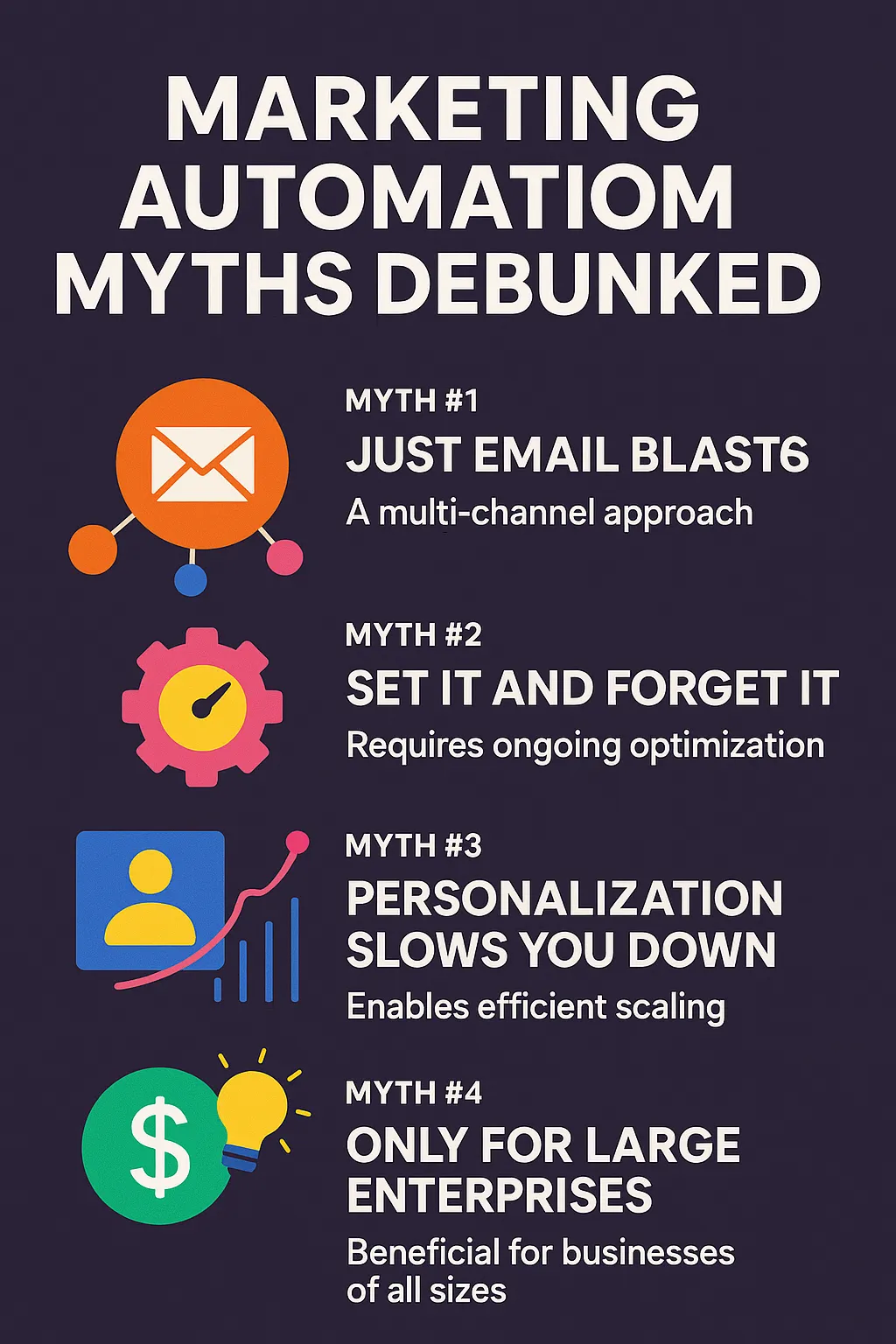Marketing Automation Myths Debunked

Marketing automation has come a long way from its early days as a glorified email scheduler. Today, it’s a powerful driver of personalization, efficiency, and revenue growth. But with that evolution comes a lot of misconceptions, many of which can hold teams back from realizing its full potential.
Let’s separate fact from fiction.
Myth 1: Marketing Automation Is Just Email Blasts
The reality: Email is only one channel in a much bigger ecosystem.
Modern automation spans SMS, push notifications, in-app messaging, direct mail triggers, paid ad retargeting, and even dynamic website personalization.
A robust setup allows brands to orchestrate connected journeys across multiple touchpoints, ensuring the right message reaches the right customer, at the right time, on the right channel.
Pro tip: Start by mapping your customer journey end-to-end. Identify automation opportunities in every stage, not just inbox touchpoints.
Myth 2: Automation Means “Set It and Forget It”
The reality: Great automation is never static.
The best campaigns evolve with your audience, seasonality, and business priorities. The real work starts after you launch—testing, optimizing, and refreshing creative to keep customers engaged.
Automation is a force multiplier, but only when paired with active monitoring and iteration. Think of it as a high-performance engine: it still needs tuning to run at peak efficiency.
Myth 3: Personalization Slows You Down
The reality: Done right, personalization scales faster with automation.
Dynamic content blocks, behavioral triggers, and centralized customer data make it possible to launch hundreds of variations without building hundreds of campaigns.
Instead of bogging teams down, a well-integrated marketing automation platform actually frees creative and CRM teams to focus on strategy, not production bottlenecks.
Myth 4: Automation Is Only for Large Enterprises
The reality: Small and mid-sized businesses often see faster ROI.
Many platforms offer tiered pricing, lightweight integrations, and plug-and-play templates that make automation accessible, without enterprise-level budgets or resources.
The biggest gains often come from automating repeatable, resource-draining tasks early, like abandoned cart emails, post-purchase follow-ups, or win-back campaigns.
Myth 5: More Automation = Less Human Touch
The reality: Automation can be impersonal, but only if it’s built that way.
The most effective programs use automation to deliver more human, relevant, and timely experiences at scale. Automation should enhance empathy, not replace it.
A well-designed workflow uses data to anticipate needs, address concerns, and add value, often before a customer even has to ask.
The Takeaway
Marketing automation isn’t about replacing marketers, it’s about empowering them.
When we move past the myths, we see that automation is really about connection at scale: the ability to deliver the right message, in the right tone, through the right channel, precisely when it matters.
In the end, automation isn’t the opposite of authenticity, it’s the infrastructure that makes it possible to deliver authenticity consistently.
Next Steps:
If your automation strategy feels more like “send and hope” than “listen and respond,” it’s time for a rethink. Start by reviewing your customer journey, your data quality, and your testing cadence, and make sure your automation is serving your audience and your business goals.
